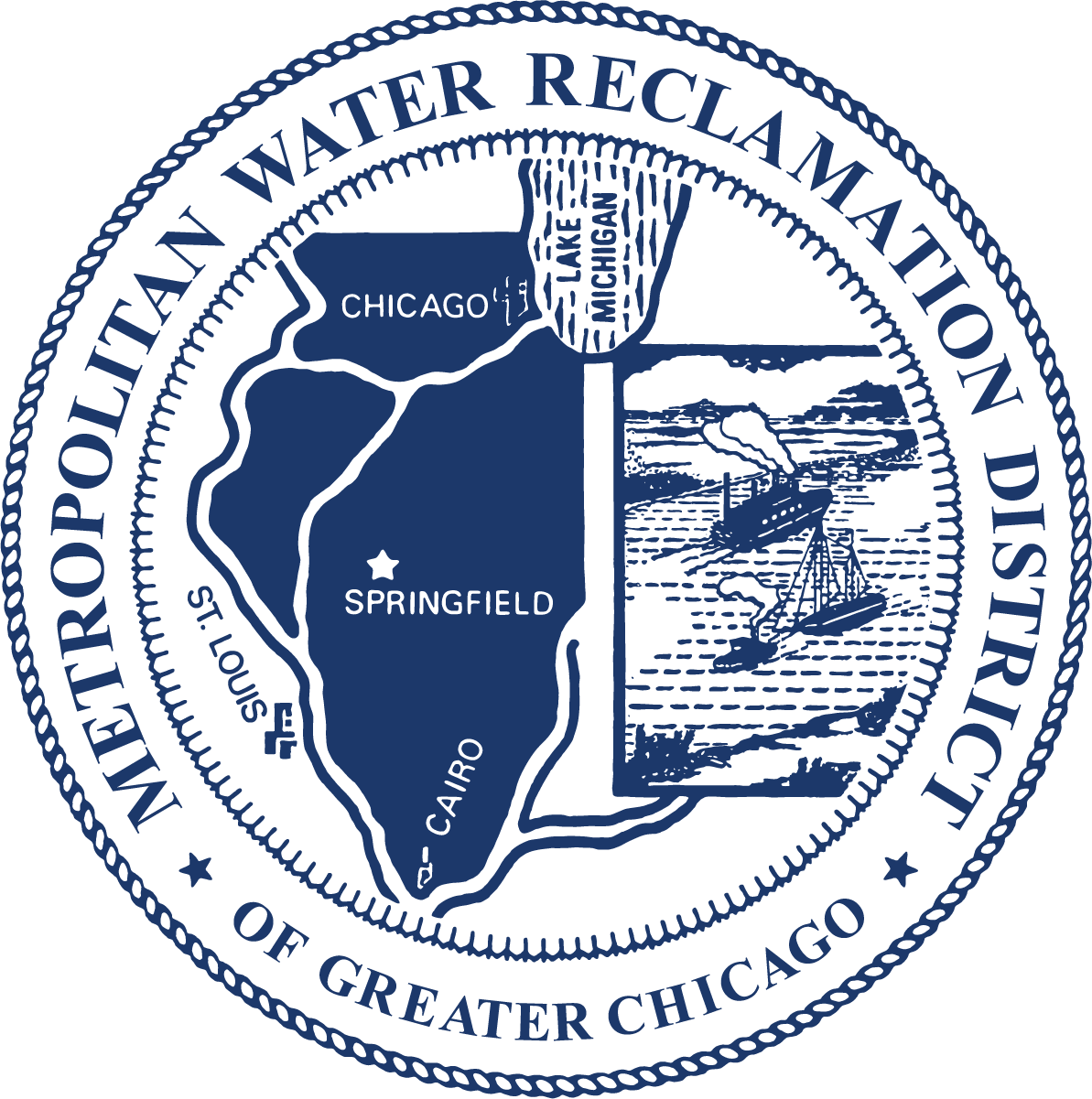Salt Creek restored: MWRD, Forest Preserve District of DuPage County, DuPage River Salt Creek Workgroup and schools of migrating fish highlight improvements at Fullersburg Woods

On August 19, project partners cut the ribbon on the newly restored Salt Creek outside the Graue Mill and Museum in Fullersburg Woods in Oak Brook, home to a thriving ecology of new migrating fish, wildlife, vegetation, attracting new visitors and trail users.
A collaboration between the DuPage River Salt Creek Workgroup (DRSCW), the Metropolitan Water Reclamation District of Greater Chicago (MWRD), the Forest Preserve District of DuPage County, Hey and Associates, and V3 Companies, the project honors the history of the Graue Mill and Fullersburg Woods, while also improving water quality and enhancing recreational opportunities in Salt Creek. In addition to removing the 90-year-old Graue Mill dam, the project revitalizes a mile of upstream Salt Creek by stabilizing the stream bank, diversifying habitat for aquatic life and planting native vegetation along the stream.
“We realized that by making this investment directly in Salt Creek, we could expand our clean water initiatives upstream at our Egan Water Reclamation Plant and make immediate improvements to fish migration and habitat, increase dissolved oxygen levels in the water and improve the overall health and quality of Salt Creek,” said Kari K. Steele, president of the Board of Commissioners at the MWRD, which contributed up to $7 million of the total $9.5 million cost of the project. “This attractive forest preserve and Salt Creek restoration are the result of wonderful collaboration for a space that will only grow in beauty and popularity as more plants, trees and shrubs grow and blossom.”
The Graue Mill dam on Salt Creek was built in 1934 by the Civilian Conservation Corps with a power-generating wheel to operate a gristmill. In recent years, the mill relied on an electric motor to turn the waterwheel and operate the gristmill, and water quality was struggling. Fish were absent upstream of the dam, and Salt Creek experienced low dissolved oxygen levels. Behind the dam was an impoundment spanning 16 acres that was filled with sediment.
Project partners sought ways to protect water quality by replacing the dam with a rock riffle that would allow fish and boaters to travel upstream. Now water flows over boulders and rocks to oxygenate the water. The water travels through deeper pools, by new riparian zones and restored banks, where black crown night herons, cormorants and egrets have returned. The project is expected to create a 30 percent increase in fish diversity for areas of the creek 17 miles north of the dam. This summer the Midwest Biodiversity Institute, a nonprofit scientific organization focusing on stream monitoring and habitat assessment, documented eight native fish species previously found only downstream of the former dam location. These included: the hornyhead chub, emerald shiner, rosyface shiner, central stoneroller, smallmouth bass, blackside darter, logperch and northern pike.
“The Salt Creek Restoration Project will have long-term benefits for fish passage, water quality, and habitat,” said Forest Preserve District of DuPage County President Daniel Hebreard. “These outcomes show what’s possible when science, community, and policy align.”
Dam removals provide fish passage throughout area waterways and exhibit the potential to promote habitat spawning and biodiversity in the Chicago area waterways, while also enhancing natural turbid flows, natural temperature regime and the transport of sediment, debris and nutrients to cut down on algae blooms to improve dissolved oxygen levels. In addition to nine new riffle areas, the new upgrades include an electronic motor for the Graue Mill water wheel that maintains the former millrace water flow. Along the restored banks, invasive buckthorn and honeysuckle have been removed.
“The removal of this dam is an enormous step in improving the river. The absence of this structure will allow 16 species of fish to move freely upstream and has created and improved 1.3 miles of restored habitat to help them repopulate the Salt Creek Basin,” said DRSCW Salt Creek Committee Chairperson Dennis Streicher. “In addition, this project has improved or created a pleasant backdrop for recreational use by the residents of DuPage County.”

The improvements to the area allow the DuPage County Forest Preserves to continue its efforts to utilize Fullersburg Woods as an educational resource, helping to teach youth the importance of preserving natural habitats. Meanwhile, the benefits of the restoration efforts are already beginning to emerge.
“Already, in just a short time, the benefits of this work are visible — improved water flow, healthier habitat, safer passage for paddlers, and a continued connection between the community and this stretch of Salt Creek,” said Tim Pollowy, senior landscape architect with Hey & Associates, who helped lead design efforts. “Our hope is that the success of this project will inspire and help clear the path for future dam removal and river restoration projects throughout the region.”
Approximately 50,000 native wetland plugs were planted along the creek to areas where invasive plants had previously been removed. Blueflag iris, swamp milkweed, marsh blazing star and other flowers will support pollinators and add long-term structure to the wetland ecosystem. In addition, another 15,000 plugs and over 350 trees and shrubs will be planted throughout floodplains, wetlands, woodlands and other areas at the preserve. Although some of the planting and monitoring will take a few more years, results are already proving positive in through the improved habitat, cleaner water and native fish appearances.
“We are excited for the improvements to come as the vegetation gets more established over the coming years. Our continued maintenance will help ensure long-term success for the Salt Creek, Fullersburg Woods, and all who enjoy this beautiful space,” said Mike Famiglietti, vice president of V3, which oversaw construction. “Thank you to the DRSCW, MWRD, and FPDDC for your continued support and confidence in our work. We look forward to future collaborations.”
